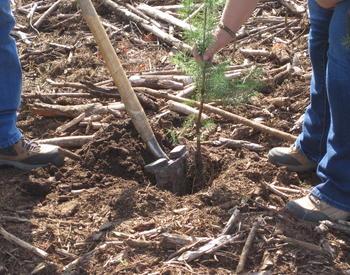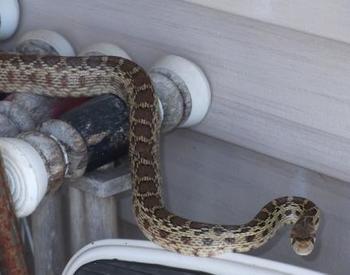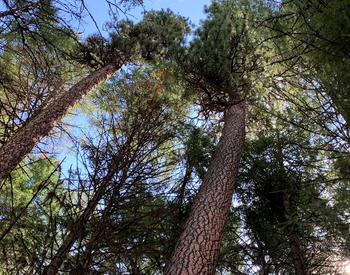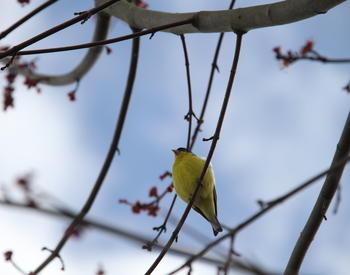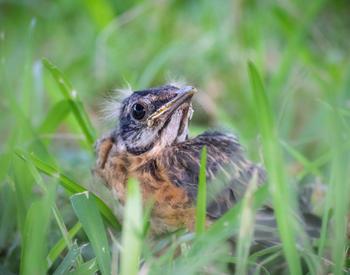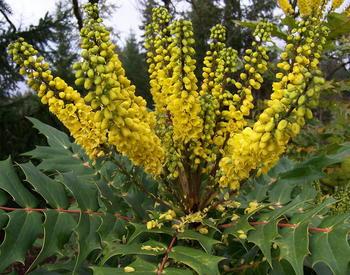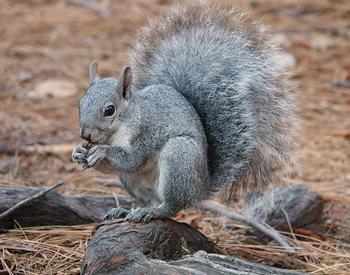Transcript
(upbeat music)
- So a disturbance, such as a clear cut,
or patch cut, creates many benefits,
potential benefits for
pollinators and other animals
that depend on young developing forests.
The harvest creates a
lot of new resources.
Sunlight and water, that
allows many plants to flourish.
The problem is, many of
those flourishing plants
will also compete with
the trees that we need
to establish to meet our forest
practices rules in Oregon.
One of the things we wanna try to do
is maintain some of this
vegetation that comes in naturally,
that includes many flowering
shrubs and herbaceous plants,
to enhance the habitat for
pollinators and other species,
while also successfully
establishing our seedlings.
So this site is a really
good example of the type
of vegetation that can
occur after a harvest,
if it hasn't been sprayed.
If we look around, we see a whole bunch
of different flowering
herbs, and also shrubs,
that are great habitat for
many of the pollinators.
One strategy to improve pollinator habitat
in a harvested area,
is rather than doing a broadcast
spray over the whole area,
to just do spot treatments.
Herbicide treatments around
individual planting areas.
That is, an area maybe four-by-four,
or six-by-six feet square,
to create a weed-free area
where the individual seedling
can be successfully established
without direct competition,
while leaving most of the planting,
or most of the field available
for the native vegetation
to come in, and provide
flowering pollinator habitat.
The idea of a spot treatment
is that we're spraying
just a limited area.
Individual planting
spaces, maybe four-by-four,
or six-by-six feet square.
All the other space in
between the individual plants
is left untreated with herbicides,
and therefore able to remain
in the native natural vegetation,
providing flowers and other habitat
for bees and other animals.
So let's say you're doing just
that four-by-four spot spray.
That means that, that's about 20 percent
of a regular 10-by-10 spacing.
So 80 percent of that
plantation is left unsprayed,
untreated, and therefore available
for native plants to grow.
So spot sprays can be
established before planting,
by going out in the fall,
and spraying a contact herbicide
to create the dead space.
And/or, you need to
maintain that weed control
by doing a follow-up release treatment.
And a spot spray can
be done by moving along
from tree to tree, and with a
calibrated backpack sprayer,
spraying a short strip on
either side of the seedling.
Directed spray, not contacting
the seedling very much
to put down a soil active herbicide
to control new seedlings,
new weed seeds the following year.
(upbeat music)
This video goes over how to use spot spraying to enhance pollinator habitat while still using herbicides to control vegetation.
¡Use los pesticidas con seguridad!
- Póngase ropa de protección y equipo de seguridad según las recomendaciones de la etiqueta. Báñese después de cada uso.
- Lea la etiqueta del pesticida—aunque lo haya usado antes. Siga al pie de la letra las indicaciones de la etiqueta (y cualquiera otra indicación que Ud. tenga).
- Tenga precaución al aplicar los pesticidas. Conozca su responsabilidad legal como aplicador de pesticidas. Usted puede ser responsable de heridas o daños resultantes del uso de un pesticida.


